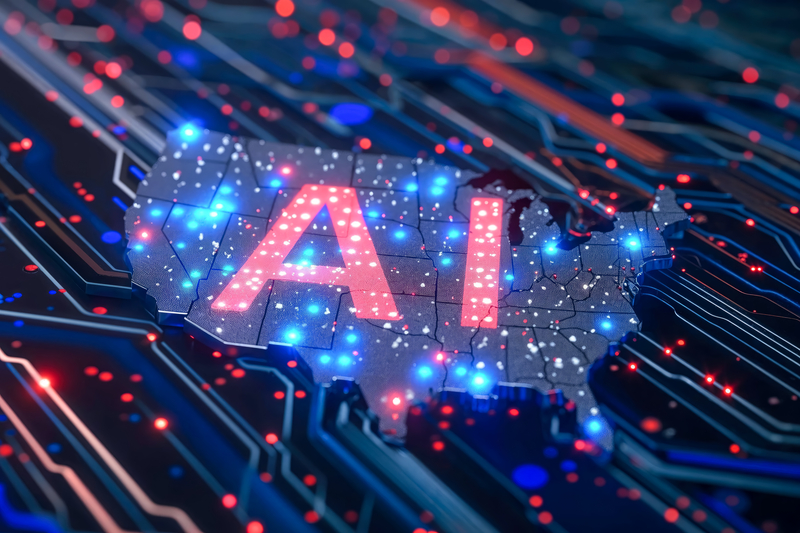
Are we human or are we security risk?
Not quite how The Killers put it, but a new report shows Human workers remain the most consistent point of attack for cybercriminals, with shadow IT and AI-driven social engineering providing attackers with both new tools and new targets.
The 2025 Global Threat Intelligence Report from Mimecast reveals key trends, including the rise of smarter, AI-powered phishing and social engineering cyberattacks, and threat groups increasingly using trusted services to evade detection and reach targets. Mimecast’s analysis finds that phishing accounts for 77 percent of all attacks up from 60 percent in 2024 with attackers likely leveraging more AI tools.

Access to public web data is essential for the AI market
New poll data reveals that 89 percent of respondents say access to public web data is critical for ensuring a fair and competitive AI market.
The survey carried out at this year’s OxyCon web intelligence event shows organizations are getting worried they are losing access to precious web data, robbing them of the ability to make the AI of the future as democratic as possible. 64 percent of respondents say their organisations has been blocked from more websites than a year ago.

Observability data drives key decisions on customer experience and more
The latest Splunk State of Observability report for 2025, released today by Cisco, shows that observability insights are guiding key business decisions in customer experience, product roadmap forecasting, and brand perception.
The study based on a survey of 1,855 ITOps and engineering professionals worldwide, and underscores how observability has evolved beyond an IT function to a boardroom priority. It finds 74 percent believe observability is important for monitoring critical business processes and 66 percent say it is key to understanding user journeys.

How AI is driving email phishing and how to beat the threat [Q&A]
Among all of the various forms of cyberattack phishing attempts delivered by email are still one of the most common.
What’s more AI is making these attacks more effective, because you can no longer rely on looking out for dodgy grammar or other signs that a message may not be what it seems.

Addressing the data protection challenges of rolling out AI [Q&A]
Artificial intelligence is transforming the way that many areas of business operate. But with the benefits also come new risks to corporate data.
We spoke to Rohan Sathe, CEO and co-founder of Nightfall AI, to find out how AI risks exposing sensitive information and what companies can do to protect themselves.

AI delivers time gains but people are still key to productivity
Workers say they are saving an average of two hours per day thanks to AI use. But these perceptions of productivity gains are at odds with the reality experienced by many organisations according to a new report.
A study from the Adecco Group draws on insights from 37,500 workers across 31 countries and 21 industries. It finds confidence in AI usage has surged, with a staggering 71 percent of respondents suggesting that nothing holds them back from using AI, a significant jump from 19 percent in 2024.

Gen Z targeted by AI-driven extortion scams
New research looking at high pressure extortion scams reveals that Gen Z is being particularly impacted by AI-powered threats. All mobile users are at risk, however, with one in three having been targeted by an extortion scam, often threatening to expose pictures or browsing history, and nearly one in five falling victim.
The research from Malwarebytes shows a distinct target profile for extortion. 69 percent of victims and 64 percent of targets are Gen Z or Millennial (compared 52 percent of victims and 40 percent of targets of other types of scams). 65 percent of victims and 60 percent of targets are male (vs. 48 percent/45 percent)

AI readiness helps companies gain an edge over their competition
The latest AI Readiness Index from Cisco is based on a study of over 8,000 AI leaders across 30 markets and 26 industries. It finds that what it calls ‘Pacesetters,’ about 13 percent of organizations for the last three years, outperform their peers across every measure of AI value.
Of these Pacesetters 98 percent are designing their networks for the growth, scale and complexity of AI compared to 46 percent overall.

Organizations face more AI-powered fraud attacks but privacy tools make detection harder
A new study from fraud prevention specialist Fingerprint finds 41 percent of over 300 fraud and technology leaders surveyed say their organizations are already facing AI-powered attacks.
These sophisticated threats, which range from generative AI phishing schemes to automated bot attacks, are creating a significant operational crisis. According to the report, 93 percent of fraud teams have seen noticeable operational impacts, with 38 percent of organizations citing higher costs from manual review and triage as a top business concern.

SMBs vulnerable to AI-powered cyberattacks and complacent about ransomware
A new report from Cork Protection looks at the security challenges facing small and medium-sized businesses (SMBs), backed up by comment from a range of industry leaders. Challenges include an asymmetric threat landscape, defined by the misuse of artificial intelligence and relentless exploitation of human vulnerabilities.
Among the findings are that AI-powered adversaries are launching automated, sophisticated campaigns at unprecedented scale. Also the financial fallout of a breach now extends far beyond ransom, often resulting in business-ending costs.

America embraces AI but some states show greater interest
Americans are increasingly turning to AI to save time, automate tasks, and boost creativity. Research from AI company Chatronix shows that the US is embracing the use of AI but that some states show more interest than others.
Analysis of Google Trends data between June 2024 and June 2025 reveals where searches for ChatGPT and Gemini are most concentrated. Scores from 0-100 represent the relative popularity of each search term by state, as a fraction of total Google searches in that region. Higher values reflect a larger share of interest, not higher total search counts.

Software engineers love building new features but are spending more time on other things
A new survey of 1,200 software engineers and technology leaders finds that only 33 percent of engineers strongly agree that they spend the majority of their time on work that energizes them. They spend just 16 percent of their week building features, despite 93 percent saying it’s the most rewarding part of their jobs
The study from Chainguard looks at how friction from repetitive maintenance, fragmented tools, and burnout continues to weigh heavily on the developer experience, while also revealing how AI and automation ease workloads to give software engineers more time for meaningful work.

Cyber skills gap leads to escalating security risks
A shortage of skilled cyber professionals is leading to critical security roles being unfilled at a time when they are needed most, according to a new skills gap report from Fortinet.
Organizations are turning increasingly to AI to strengthen their cybersecurity postures and fill gaps, but they also acknowledge that AI may be used against them as an engine of new or improved cyberattacks, especially given the lack of AI skillsets across teams.

Poor API security practices could put agentic AI deployments at risk
A new report exposes a disconnect between rapid API adoption and immature security practices, which threatens the success of critical AI and automation initiatives.
The study from Salt Security, based on responses from over 380 professionals tasked with managing APIs, finds 80 percent of organizations lack continuous, real-time API monitoring, leaving them blind to active threats targeting AI agents.

US companies dominate as banks race to adopt AI
The leading banks for AI maturity have pulled away from their peers in 2025, consolidating earlier gains and increasingly realizing ROI for their AI investments.
The latest AI Index from intelligence and benchmarking platform for AI adoption in financial services, Evident, shows JPMorganChase, Capital One and Royal Bank of Canada are the three leading banks in AI adoption.
